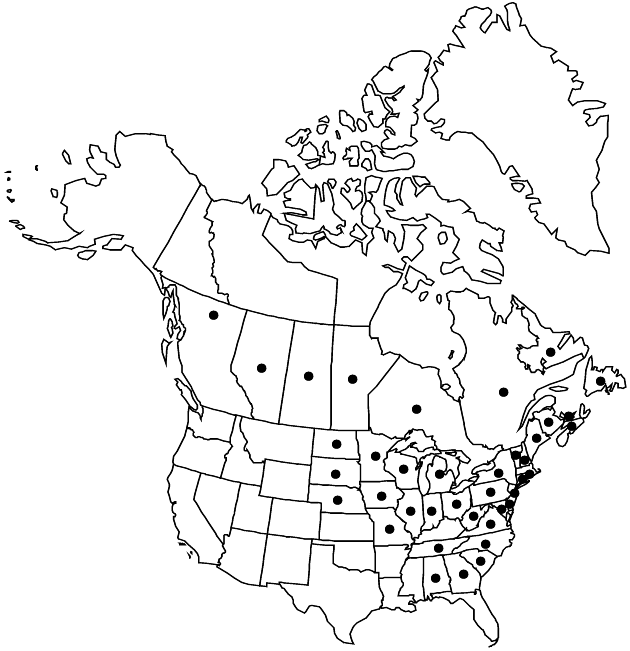Symphyotrichum puniceum var. puniceum
Plants 7–200+ cm. Stems usually sparsely to ± densely hirsute, often glabrescent, sometimes glabrate proximally, sometimes entirely so (hirsute in lines in arrays). Leaves: abaxial faces paler than adaxial, with a dark, distinct reticulum, adaxial without impressed main veins; array leaves usually equal to mid cauline. 2n = 16, 32.
Phenology: Flowering Aug–Oct.
Habitat: Wet soils, often peaty, open to moderately shaded, margins of alluvial deciduous woods and alder thickets, swamp margins, edges of bogs, stream and lake shores, marshes, wet meadows, early-melting coastal or riparian snowbeds with boreal forbs (northern alpine and subarctic regions), roadside and drainage ditches
Elevation: 0–2000 m
Distribution

St. Pierre and Miquelon, Alta., B.C., Man., N.B., Nfld. and Labr., N.S., Ont., P.E.I., Que., Sask., Ala., Conn., Del., Ga., Ill., Ind., Iowa, Maine, Md., Mich., Minn., Mo., Nebr., N.H., N.J., N.Y., N.C., N.Dak., Ohio, Pa., R.I., S.C., S.Dak., Tenn., Vt., Va., W.Va., Wis., introduced in Europe.
Discussion
The following forms that pertain to var. puniceum are not recognized here: Aster puniceus forma blandus (Pursh) Lepage, forma candidus Fernald, forma colbyi Shinners, forma demissus (Lindley) Fernald, forma etiamalbus Venard, and forma rufescens Fassett. Variety calderi is a dwarf morphotype at the northern limit of the range that does not deserve taxonomic recognition. Hybrids of var. puniceum with the following species have been reported: Symphyotrichum lanceolatum (probably A. tardiflorus Linnaeus var. lancifolius Fernald), S. lateriflorum, S. urophyllum, and S. cordifolium.
Selected References
None.